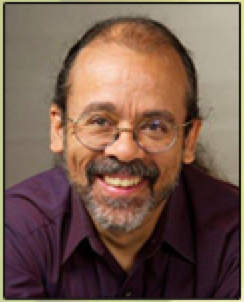Shamanic Healing
Shamanic Healing deals with the spiritual, psychic, or energetic dimensions of illness, healing, and well being: physical, emotional, mental, and psychological.
Dubious? If you’d told me ten years ago that I’d be doing this, I’d be dubious, too.
But it turns out that two of the world’s most prominent shamans are a psychotherapist (Sandra Ingerman) and a psychologist (Alberto Villoldo, PhD), Look up “Power Up Your Brain,” which Villoldo co-authored with Dr. David Perlmutter, a board-certified neurologist.
“The shaman and physician for millenia were the same person until the 19th century, when they were split apart in the name of science.” – Mark Hyman, M.D.
You needn’t have problems to benefit from shamanic healing. In indigenous societies, the shaman is/was the village doctor, psychologist, and wise person, keeping villagers healthy, bringing them wisdom and guidance, and helping them live their lives more fully. (Read more about shamanism at the bottom of the page.)
What to Expect from a Shamanic Healing Session
Clients typically report feeling lighter and unburdened, empowered, and more focused, motivated, and excited about life. The pain of traumatic experiences is diminished, and physical pains can be alleviated.
“Shamanic healing [is] . . . about helping patients break through the psychic and emotional barriers that stand between illness and wellness.” – Rabbi Gershon Winkler
Changes are often immediate, but it’s also common for change to set in later. (Three days seems most common; long-term changes can take months to fully settle in.) It’s also possible for a client to feel physically or emotionally worse for a few days after a session, because shamanic healing, like psychological work, can “bring things up.” I ask clients to commit to contacting me three to four days after a session so I can determine if more work is needed right away. (This work can often be done remotely.)
You should budget for a healing process to take up to three visits (90 to 120 minutes each) over several weeks, although they often take only one or two.
My Qualifications and Training
Michael Harner, a cultural anthropologist, is credited for reviving shamanism in the U.S. through his Foundation for Shamanic Studies. He distilled the common practices of shamans world-wide into what he calls “core shamanism.”
I took a one-year program with Mary “Tyrtle” Rooker, of Takoma Park, after my interest was piqued by a beginner’s workshop with the Foundation’s local teacher, Dana Robinson. Mary’s program is based on studies with Harner, Sandra Ingerman (Soul Retrieval innovator), Tom Cowan (noted Celtic shaman), and Betsy Bergstrom (Buddhist techniques). In the shamanic tradition, Mary was given permission to teach by her teachers – shamanism has no certificates or degrees. She, in turn, encouraged me to open a practice.
With advanced workshops with Rooker and Robinson, my instruction time totals more than 200 hours. I have also been attuned by a Reiki master.
What is Shamanism? What is a Shamanic Healer?
Shamanism might be the oldest form of spiritual healing, dating back about 30,000 years. It’s been found in indigenous cultures across the world, and the Bible and the Torah contain many examples of shamanism (loosely defined here as meaning direct communication with spirit or a higher power). Some people feel more comfortable with shamanic healing if they think of it as energy work or prayer.
A shaman is a person who moves into an altered state of consciousness (“journeys”) to access the spirit world to bring back healing, power, and information. The word “shaman” comes from Siberia; it means “one who sees in the dark” (the hidden realities), and widely refers to medicine women/men, healers, and seers.
Shamans work with spirit allies who guide them in providing what is needed to heal clients. I believe (and most shamanic practitioners agree) that I act as a conduit for Spirit or universal consciousness. I don’t do any healing myself.
Techniques include soul retrieval (bringing back parts of a client’s soul, lost to traumatic experiences), power object or power animal retrieval (to restore power or other attributes), and the removal of unwanted energies.
Resources:
- the Foundation for Shamanic Studies: www.shamanism.org
- Mary “Tyrtle” Rooker: www.shamanicspring.com/
Note: Parts of this page were paraphrased from www.sacredshamanichealing.com.

Recent Comments